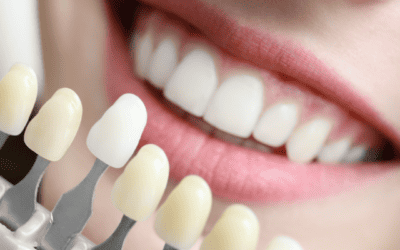It’s harder to see the dentist at the moment due to the COVID-19 shutdown. So how can you keep your smile healthy and prevent any dental emergencies during this time?
1. Brush twice per day with a fluoride toothpaste
When we brush our teeth, we are doing 2 things
- Physically brushing away plaque
- Applying the fluoride in our toothpaste to the teeth, where it is being absorbed into the enamel.
This is why brushing is important. You can’t just get away with using a fluoride mouthwash. We need the mechanical action of the bristles brushing away the plaque. I liken using a mouthwash to rinsing your dishes – it can help, but it’s not the same as scrubbing the debris off.
What is plaque and why do we need to remove it?
Plaque is a sticky substance that builds up on your teeth. If you’ve had a sugary snack and noticed that furry feeling – that’s plaque. It’s full of bacteria and their waste products. The bacteria feed off the sugar you eat and produce waste. That’s why the more sugar you eat, the furrier your teeth feel. Remember that nice smooth feeling after a professional tooth cleaning? That’s because all the plaque has been removed. This shiny smooth feeling is what you are aiming for after your brushing routine.
Plaque builds up easier on surfaces that aren’t smooth – this is the join where the tooth meets the gum (plaque building up here will cause tooth decay and gum disease), the fissures or grooves in the teeth and around any rough filling or crown edges. It will also build up between the teeth – which is why we have to clean there too (see point number 2).
How do I brush properly?
For these reasons, it’s important when you are brushing to not just get the smooth surfaces on the outside and inside of your teeth, but to get right up to the gum-line. What you want to do is aim your toothbrush bristles up towards the join between your tooth and your gums and brush in a circular motion. If you are using an electric toothbrush, it will be doing this circular motion for you and so just hold the brush still, at an angle to the gums and let it do the work, moving it on slowly.
VIDEO
To get all these tooth surfaces (the outside of the teeth, the inside towards your tongue and roof of mouth, and the biting surfaces where all the grooves are) of the back, front, top & bottom teeth, will take a good 2 minutes. So set a timer (electric toothbrushes can have this built in) or put on your favourite tune and brush away!
Make sure you are using a fluoride toothpaste. When you are finished brushing, spit out the excess toothpaste, but don’t rinse your mouth. You want that fluoride to hang around and protect your teeth – don’t rinse it away. We get the best result from this when we brush right before bed (so no midnight snacking!).
2. Clean between your teeth daily
As mentioned above, that sticky plaque builds up between the teeth. Some teeth are tight together, and no matter how great your toothbrushing technique is, the bristles will never reach there.
To clean between the teeth we have two things we can use, and in an ideal world you will use both as they work in different ways.
Floss
Floss or dental tape, goes down between the contact of two adjacent teeth. This means it will remove plaque from that area where the teeth touch. This is a common spot for decay to start and so flossing is to help prevent these types of cavities.
You should also bring the floss far enough down that it gets that join between the tooth and the gum. This will remove plaque from this area and help prevent gum disease.
VIDEO
Interdental brushes
These little brushes are also sometimes known as bottle brushes. There are different types and sizes on the market. Ideally what you are looking for is the right size for each gap between your teeth – this means you might need larger ones for teeth that are more spaced, and smaller ones for teeth that are tight together.
You place the brush at the gum line between two teeth and pop it through the gap with a little scrubbing action, much like where you would use a toothpick. Due to the brush being broader and having bristles like floss does, it is much more efficient at removing plaque from these areas. This is why we recommend using floss and the interdental brushes.
Depending on your level of plaque and risk of tooth decay and gum disease as advised by your dentist, you may get away with flossing on alternate days and using the interdental brushes on the opposite days. Some people like to floss and use the brushes every day. You can do this at the same time. What I like to do is use the interdental brushes in the morning and floss in the evening. You can clean between your teeth at any time in the day. We have had patients who floss while watching TV!
VIDEO
3. Stop snacking!
Snacking on unhealthy foods is not only bad for your waistline but also for your teeth. Every time you consume something sugary, the plaque bacteria feed off that and produce acid. This acid makes your mouth more acidic or lowers the pH. Your saliva likes to sit at pH neutral (pH 7). Every time your teeth have an ‘acid attack’ your saliva works to bring this pH back to neutral. This takes time and if you snack again before this has happened, your mouth pH will stay in this acidic zone for longer, which is damaging of your teeth.
If you are having sugar and eating it as a desert after a meal, you will have more saliva in your mouth from eating the meal and the sugar will be neutralised quicker. In addition, that’s one acid attack. Compare this to snacking on a bag of lollies or sipping on soft drink over the course of an hour or so. That’s a prolonged acid attack and there is room for more damage.

Snacking on energy or sports bars can damage your teeth
What can you do to help neutralise plaque acids?
You can eat something alkaline after having something sugar. Cheese is excellent for this. Or a glass of plain milk. In addition, chewing sugar free gum gets your saliva going and this will start to neutralise those acids.
4. Reduce your sugar intake – watch for hidden sugars
We all know that sugar causes tooth decay. But sugars can be sneaky and hide in places where you don’t expect them. Some culprits of what you think are healthy, but are actually packed with sugar are gluten free alternatives, ‘fat free’ where the sugar has been replaced with fat (too much sugar in your body turns to fat anyway) and things marketed as ‘natural’. Dried fruit is incredibly high in sugar and therefore so are natural mueslis and cereal bars.
Another unsuspecting place for sugar to hide are in sauces – everything from curry paste to mustard. Sugar also hides in fast food. Read Mishari’s recipe for a healthy alternative to KFC

Sports drinks can contain a lot of sugar.
Check for hidden sugars in anything that comes in a packet (this also includes bread). Look under ‘carbohydrates of which sugar’ and look at the amount per 100 grams. This lets you compare with similar products.
Sugar also comes disguised on the ingredient list and comes under many other names such as fructose, maltose, dextrose, glucose, sucrose, galactose. Look for names with -ose at the end. Even sneakier ones to look out for are maltodextrin, agave nectar, barley malt.
Some sugars are seen as natural, like honey, maple syrup and the sugar in fruit. The bacteria in your mouth that feed off sugar don’t really distinguish and it’s all damaging. However, the sugar in fresh fruit is contained within the structure of the fruit and is less damaging. Unfortunately as soon as that fruit is dried or squeezed into juice the sugar can damage our teeth. The stickier something is, for example dried fruit, the more it will stick into those grooves on the teeth and the more damage it can do.
5. Drink more water
One of the best things you can do for your teeth and your general health is to replace juice and soft drink with water. Not only is more water good for you.
If you have a can of coke 3 times per week, for example, and you replace this with a glass of water you are cutting out 27 grams of sugar per week. That’s a reduction in 1,404 grams of sugar per year. Just think how much better your teeth and your general health will be! Not only does too much sugar lead to tooth decay, but to obesity, diabetes, heart disease and some cancers.

Drink more water.
In addition, keeping hydrated with water will help the saliva in your mouth. When we get dehydrated our mouth will dry out. Saliva is incredibly protective of your teeth, helping to neutralise those acids. But it also contains enzymes and antibacterial components. People with dry mouth are more susceptible to tooth decay, gum disease and other infections of the mouth.
We’re here for you
If you are worried about your teeth, or would like personalised advice from the dentist on your toothbrushing or diet, please contact the practice.
You can email us at hello@dentistryongeorge.com.au or call us on 0732111155


